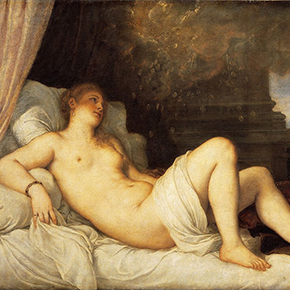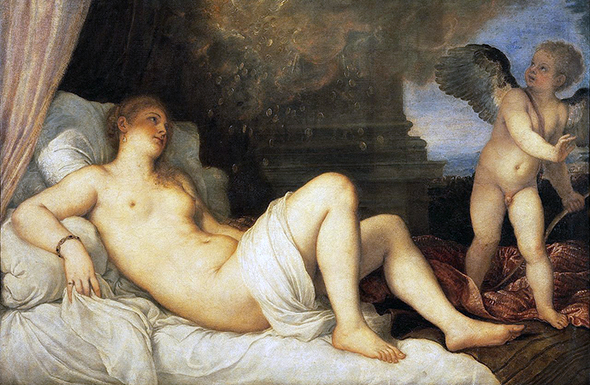The first major retrospective exhibition ever presented of paintings by the imaginative Italian Renaissance master Piero di Cosimo (1462–1522) premieres at the National Gallery of Art, Washington, this Sunday, February 1 through May 3, 2015. Piero di Cosimo: The Poetry of Painting in Renaissance Florence will showcase some 44 of the artist’s most compelling works. With themes ranging from the pagan to the divine, the works include loans from churches in Italy and one of his greatest masterpieces, Madonna and Child Enthroned with Saints Elizabeth of Hungary, Catherine of Alexandria, Peter, and John the Evangelist with Angels (completed by 1493), from the Museo degli Innocenti, Florence. Several important paintings will undergo conservation treatment before the exhibition, including the Gallery’s Visitation with Saints Nicholas of Bari and Anthony Abbot (c. 1489–1490)—one of the artist’s largest surviving works.
“We are delighted to share the brilliance of Piero di Cosimo—the Renaissance’s most spellbinding storyteller—with our visitors,” said Earl A. Powell III, director, National Gallery of Art, Washington. “This is also the first time the Galleria degli Uffizi in Florence has co-organized a paintings exhibition with another museum and we look forward to many more projects with our Italian partners.”
After Washington, a different version of the exhibition, including work by Piero’s contemporaries, will be on view at the Galleria degli Uffizi, Florence from June 23 through September 27, 2015, entitled Piero di Cosimo (1462–1522): Pittore fiorentino “eccentrico” fra Rinascimento e Maniera.
“No artist has given the world more rare and singular inventions while remaining in the shadow of the Renaissance greats of his time than Piero di Cosimo,” said Cristina Acidini, Superintendent of Cultural Heritage for the City and the Museums of Florence. “His beguiling pictorial creations will linger in the imagination of all those who see the exhibition.”
“Una iniziativa unica nel suo genere, di grandissimo prestigio – ha commentato l’Ambasciatore d’Italia a Washington Claudio Bisogniero – che conferma lo straordinario rapporto di collaborazione tra la National Gallery e il sistema museale italiano, grazie anche all’opera del Ministero degli Esteri italiano e della nostra Ambasciata. Per citare alcuni recenti esempi, penso alla mostra del David Apollo dal Museo Nazionale del Bargello e del Galata Morente dai Musei Capitolini che hanno rispettivamente aperto e chiuso il 2013 – Anno della Cultura Italiana negli Stati Uniti, la mostra della Danae di Tiziano dal Museo di Capodimonte per celebrare il semestre di Presidenza italiana dell’UE, e alla serie innumerevole di concerti, mostre, proiezioni di film che organizziamo costantemente con questo grande museo americano”.

Piero di Cosimo, Liberation of Andromeda, c. 1510-1513
Galleria degli Uffizi, Florence
Alinari / Art Resouce, NY
SOURCES: NGA, IT-EMB


